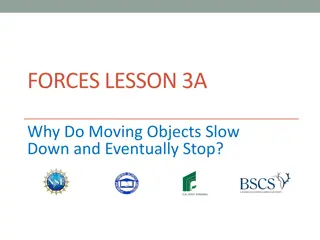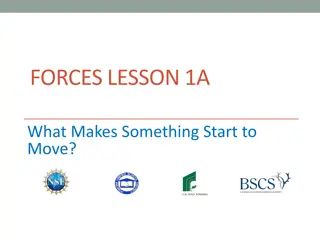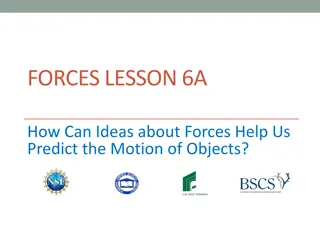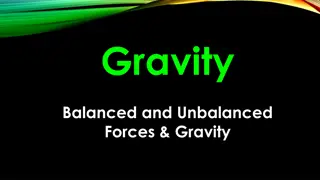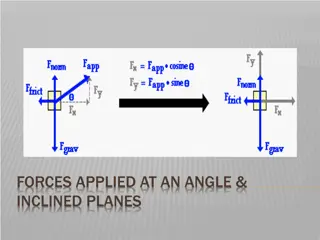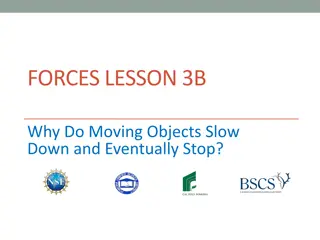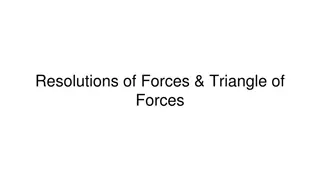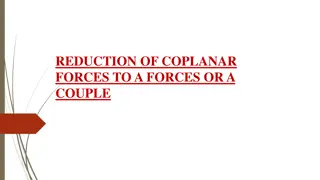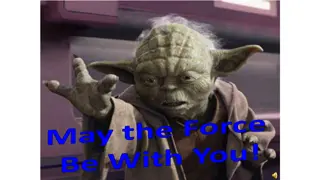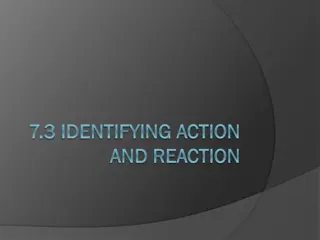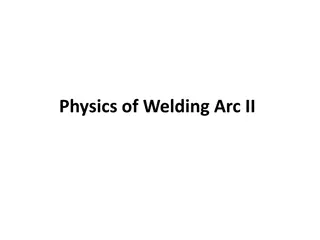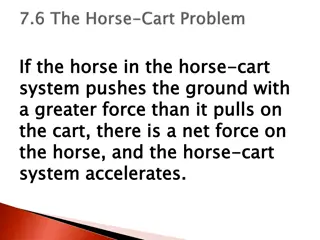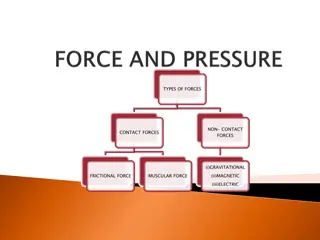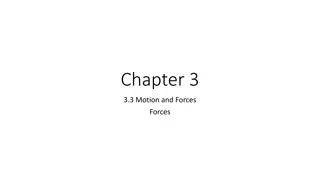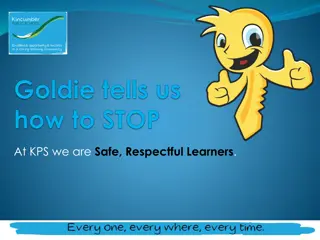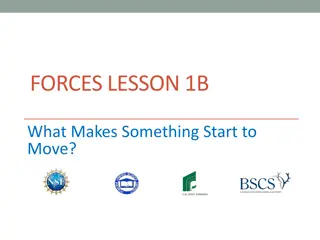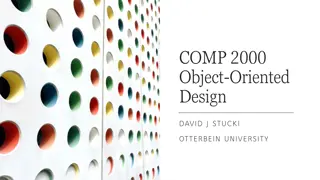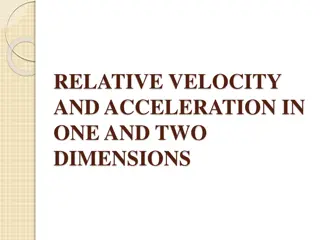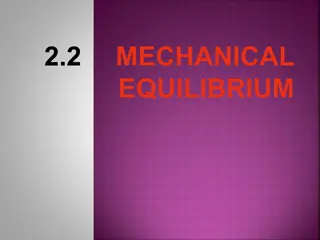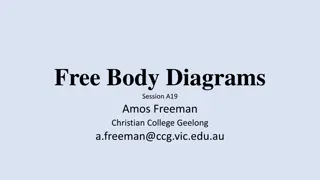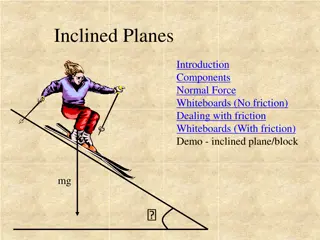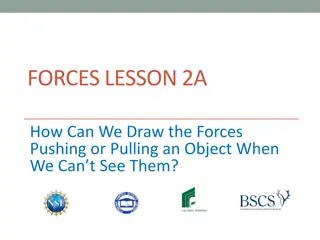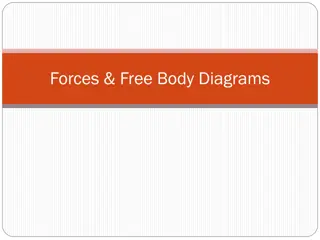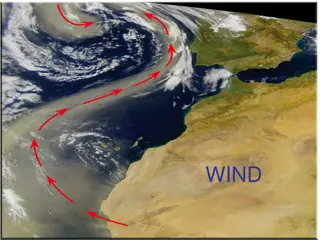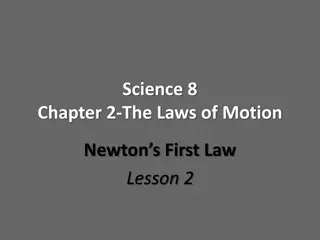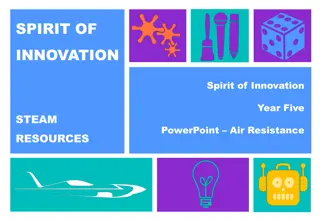Understanding Forces: What Makes a Moving Object Slow Down and Stop?
The lesson delves into the forces that cause a moving object to slow down and eventually stop. It explores the concepts of friction and surface texture using real-world examples and data analysis. Students investigate patterns in object movement on different surfaces and make predictions about the impact of surface characteristics on motion. The focus is on developing a deeper understanding of forces through hands-on experiments and critical thinking activities.
Download Presentation

Please find below an Image/Link to download the presentation.
The content on the website is provided AS IS for your information and personal use only. It may not be sold, licensed, or shared on other websites without obtaining consent from the author. Download presentation by click this link. If you encounter any issues during the download, it is possible that the publisher has removed the file from their server.
E N D
Presentation Transcript
FORCES LESSON 4A What Force Makes a Moving Object Slow Down and Eventually Stop?
Review: What Have We Learned So Far? What is a force? Can you give an example? What is gravity? Can you give an example?
Review: What Have We Learned So Far? In our investigation, what force made the toy car start to move? Was the force that made the car start moving the same or different each time the car rolled over one of the three surfaces? Why is it important to make sure the force that s acting on the car is the same every time?
Unit Central Questions What makes something start to move? What makes something stop moving or change direction? What have you learned so far about forces that can help us answer these questions? Think about the sentence you completed last time: I think forces [do/do not] have something to do with making an object stop moving because ___________.
Todays Focus Question What force makes a moving object slow down and eventually stop?
Our Class Data Table What pattern did we identify in our class data? Surface Team 1 Team 2 Team 3 Team 4 Team 5 Team 6 Team 7 Carpet Tile Sandpaper
Lets Analyze Our Data! Why do you think the car traveled different distances over the three surfaces? What do you think the bumpiness of the surface had to do with the distance the car rolled before it stopped? Based on our data, do we all agree that an object will move farther on a smooth surface than it will on a rough surface?
Investigation: The Hand-Strip Model Describe the surface of the hand strip. How is the hand strip like or not like the three surfaces (carpet, tile, and sandpaper)? What do you think will happen when the toy car rolls over the hand strip?
Investigation: The Hand-Strip Model Why do you think the car stopped? (Use the words force, push, or pull in your explanation.)
Compare the Hand Strip with Our Surfaces In your teams, take turns using the hand lenses (magnifying glass) to examine the three surfaces. Think about how each surface is like or not like the hand strip. Discuss these questions with your teammates and record the answers in your science notebook: 1. How is the carpet like or not like the hand strip? 2. How is the sandpaper like or not like the hand strip? 3. How is the tile like or not like the hand strip?
Set Up a Data Table Create a data table in your science notebook and describe how the three surfaces are like or not like the hand strip. Like the Hand Strip Not Like the Hand Strip Carpet Sandpaper Tile
Examine the Car Wheels Take turns using the hand lenses to examine the wheels of the toy car. Then discuss these questions with your teammates: What do you notice about the wheels? Are they smooth or bumpy? Are the wheels more like the carpet, the sandpaper, or the tile? Why do you think so? Make notes about the wheels below your data table.
Lets Summarize! Share the observations you recorded on your data table. How is the carpet like or not like the hand strip? How is the sandpaper like or not like the hand strip? How is the tile like or not like the hand strip?
Lets Summarize! Can we agree that the carpet is most like the hand strip? What would you say is the main difference between the carpet and the tile when you compare it with the hand strip? Why do you think the car travels the shortest distance over both the carpet and the hand strip? What does this have to do with our science idea of force?
Todays Focus Question What force makes a moving object slow down and eventually stop?
Next Time Scientists use a special word to describe the force that makes a moving object slow down and eventually stop. We ll find out what that word is next time!



